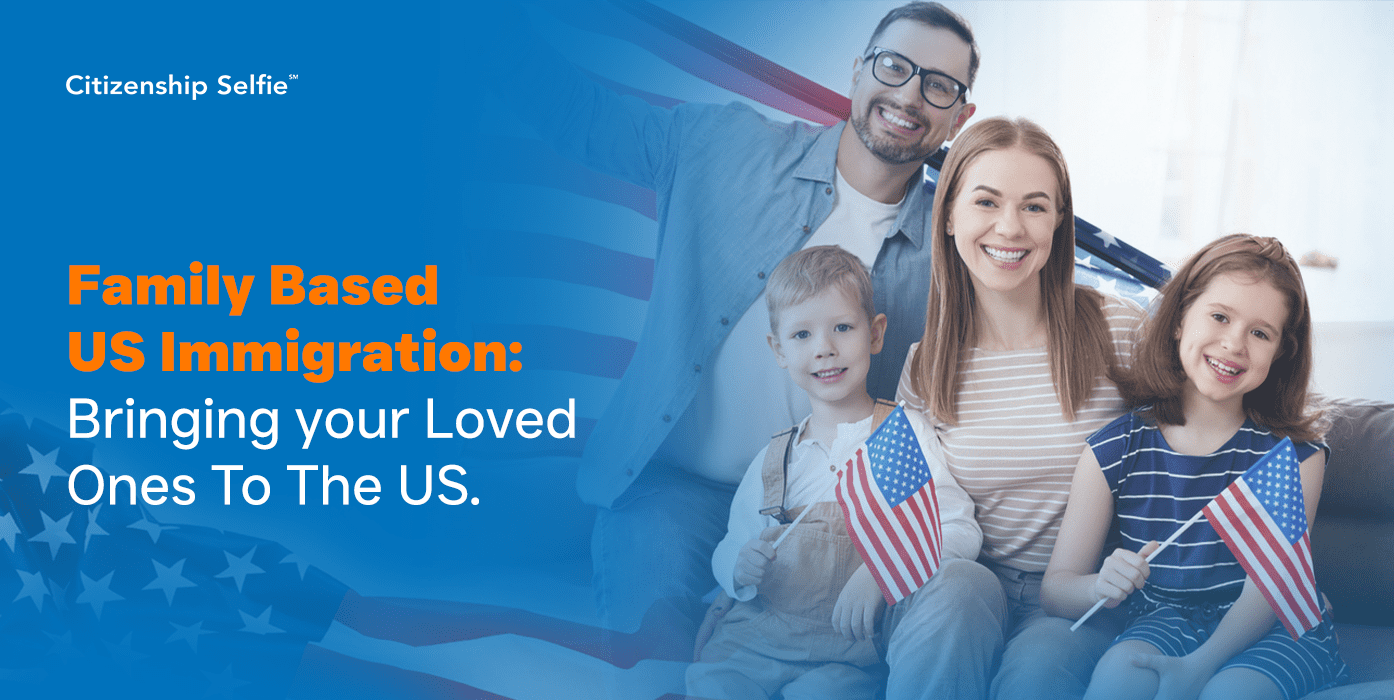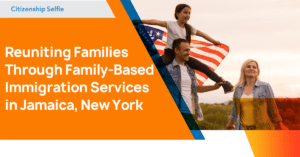Family Based US Immigration: Bringing your Loved Ones To The US.
If you want to join your family member in the US and do not know how to do this, you should opt for Family-based immigration. The family-based US immigration process allows U.S. citizens and permanent residents of the US to sponsor certain categories of relatives to come and join them in the United States. This type of immigration is essential for families who want to reunite in the U.S. because it allows them to be together, grow, and support one another in a new country.
There are many categories of visas to enter the US, and a family-based visa is one of them; the family-based US visa program has been specifically designed to unite families in the US.
This article provides an in-depth overview of family-based US immigration in the U.S. and explains the eligibility requirements for each visa type and the application process. This article covers the different steps involved in the application process, including submitting a petition, completing a visa application, and attending an interview. It provides helpful tips for preparing for the interview and offers guidance on what to expect during the visa application process. It aims to provide a comprehensive overview of family-based US immigration in the U.S. and offers practical advice and tips for families navigating this process.
Furthermore, the article explains the importance of having a strong support system during the family-based immigration process and offers suggestions for how families can find resources and support.
Eligibility for Family-Based US Immigration
There are two main categories of family-based US immigration: immediate relatives and family preference categories.
Immediate Relatives:
Immediate relatives have a close familial relationship with a U.S. citizen. The following groups of individuals are considered immediate relatives:
- Spouses of U.S. citizens
- Unmarried children (under 21 years of age) of U.S. citizens
- Parents of U.S. citizens (if the citizen is over the age of 21)
- Immediate relatives do not have to wait for a visa number to become available since there are no numerical limits on the number of visas issued to immediate relatives of U.S. citizens.
Family Preference Categories:
Family preference categories include certain relatives of U.S. citizens and lawful permanent residents (LPRs) who are not considered immediate relatives. There are four preference categories:
- First Preference (F1): Unmarried sons and daughters of U.S. citizens and their minor children.
- Second Preference (F2): Spouses, minor children, and unmarried sons and daughters (over 21) of LPRs.
- Third Preference (F3): Married sons and daughters of U.S. citizens and their spouses and minor children.
- Fourth Preference (F4): Brothers and sisters of U.S. citizens and their spouses and minor children, provided the U.S. citizen petitioner is at least 21 years of age.
The eligibility requirements for each category of US family-based visa are different. In some cases, Immediate relatives only require proof of the familial relationship with a U.S. citizen. But also, family preference categories require meeting criteria such as age, marital status, relationship, and availability of visa numbers.
There are limitations on US immigration as well. Each preference category is subject to an annual quota, meaning that only a certain number of visas can be issued yearly. This can result in waiting periods of several years or more for individuals in family preference categories to receive their visas.
The Process of Family-Based US Immigration
The family-based US immigration visa process involves several steps, including filing a petition, attending an interview, and obtaining a visa or green card. Here are the general steps involved in the process:
Filing a Petition: The first step in family-based US immigration is filing a petition with the U.S. Citizenship and Immigration Services (USCIS). The U.S. citizen or permanent resident typically files the petition on behalf of their relative. The form used for this is the I-130 petition.
Wait for Approval: The USCIS reviews the petition to assess eligibility for family-based immigration of the petitioner and beneficiary. If the petition is approved, the USCIS will send a Notice of Approval to the petitioner.
Complete a Visa Application: After I-130 approval, the beneficiary submits a visa application with biographical info and supporting documents.
Attend an Interview: After the visa application is submitted, the beneficiary will be scheduled for an interview at a U.S. consulate or embassy in their home country. During the interview, the consular officer will review the beneficiary’s application and supporting documents. They will also ask questions to determine if the beneficiary is eligible for the visa.
Obtain a Visa or Green Card: If the beneficiary is found eligible for the visa, they will be issued a visa to enter the United States. Upon arrival in the U.S., the beneficiary must obtain a green card to become a lawful permanent resident.
Here also Medical exam steps involved in the process:
Medical Exam: The beneficiary must undergo a medical exam with a designated physician to ensure they do not have any infectious diseases that could pose a public health risk.
Family-based immigration can encounter issues like inadmissibility, visa processing delays, and documentation challenges.
It’s important to consult with an experienced immigration attorney to navigate these potential issues and ensure a smooth process.
Special Circumstances
Special circumstances can affect a family’s eligibility for family-based immigration, including same-sex marriages, stepchildren, and adopted children. Here’s a breakdown of the requirements and processes for each:
Same-Sex Marriages: Same-sex marriages are now recognized for immigration purposes in the United States. Same-sex spouses can apply for family-based immigration, treated the same as opposite-sex spouses.
Stepchildren: Stepchildren may be eligible for immigration if they meet certain criteria. Stepchild must be under 18 at parent’s marriage to a U.S. citizen or permanent resident, before stepchild turns 18. The U.S. citizen or lawful permanent resident must have also legally adopted the stepchild, or the stepchild must have been in their custody for at least two years.
Adopted Children: Adopted children may also be eligible for family-based immigration. However, the requirements and processes differ depending on whether the adoption was completed before or after the child turned 16.
Family-based US immigration is complex, especially for same-sex marriages, stepchildren, and adopted children. Seek expert guidance. For smooth family-based immigration, consult an experienced immigration attorney to ensure eligibility and navigate the process effectively.
Final Summary
Family-based US immigration enables US citizens and permanent residents to sponsor their relatives for immigration to the United States. Immediate relatives and family preference are the main categories of family-based immigration, each with distinct eligibility and processes. The family-based US immigration process involves filing a petition, attending an interview, and obtaining a visa or green card. Same-sex marriages, stepchildren, and adopted children have unique considerations in family-based immigration. Consult an experienced attorney for guidance.
If you have questions or need help with the family-based US immigration process, it’s important to seek legal assistance. An experienced attorney can guide you through family-based immigration, ensuring eligibility and navigating complex requirements. With the help of a qualified attorney, you can increase your chances of success and reunite with your loved ones in the United States.
Contact Citizenship Selfie, a dedicated immigration law firm, for assistance with family-based immigration and all your immigration needs. If you need help or have questions about the family-based immigration process, please don’t hesitate to contact us.
We prioritize family reunification in the US and offer expert guidance throughout the family-based immigration journey.
Contact us today to schedule a free consultation with one of our experienced immigration attorneys.






